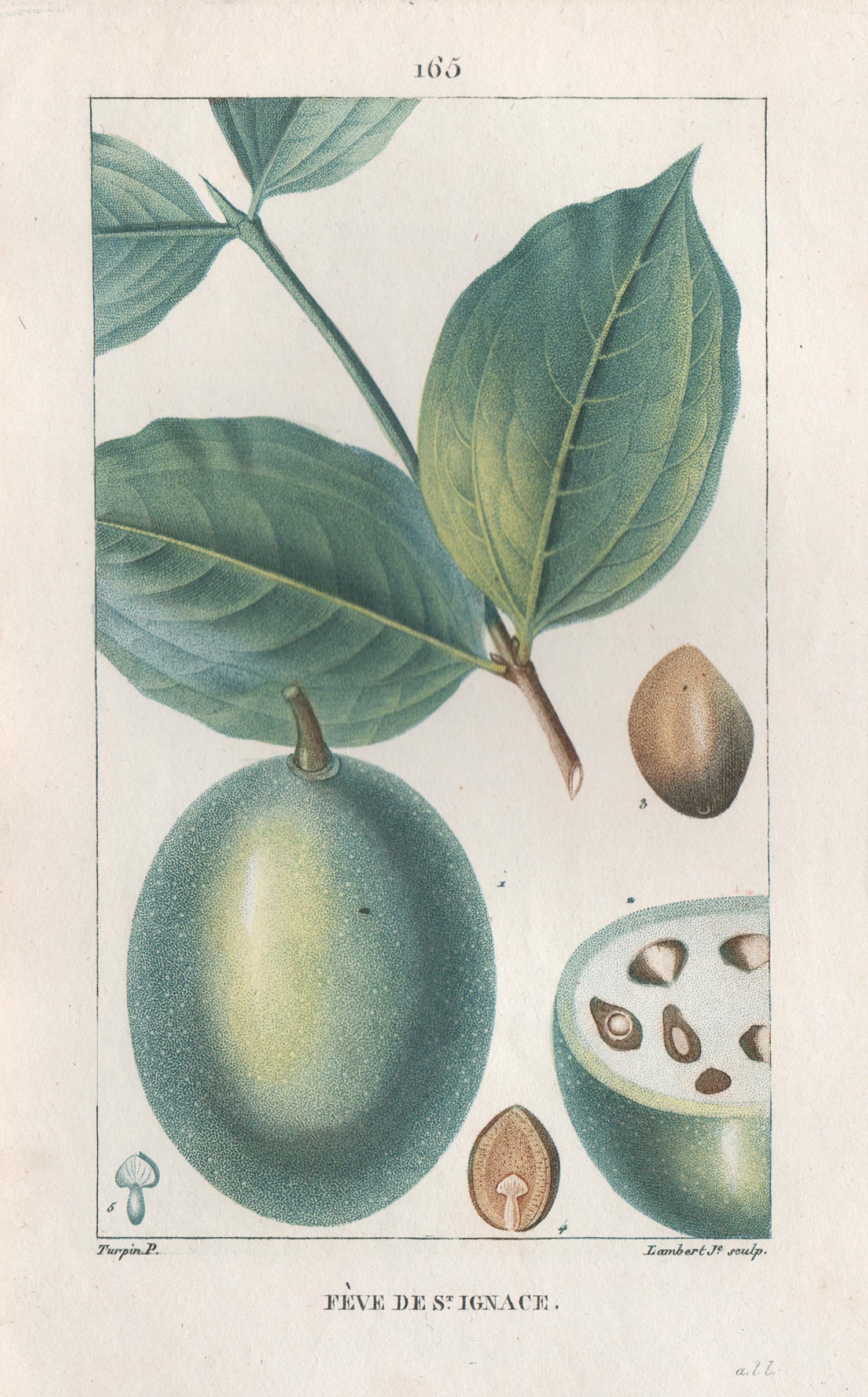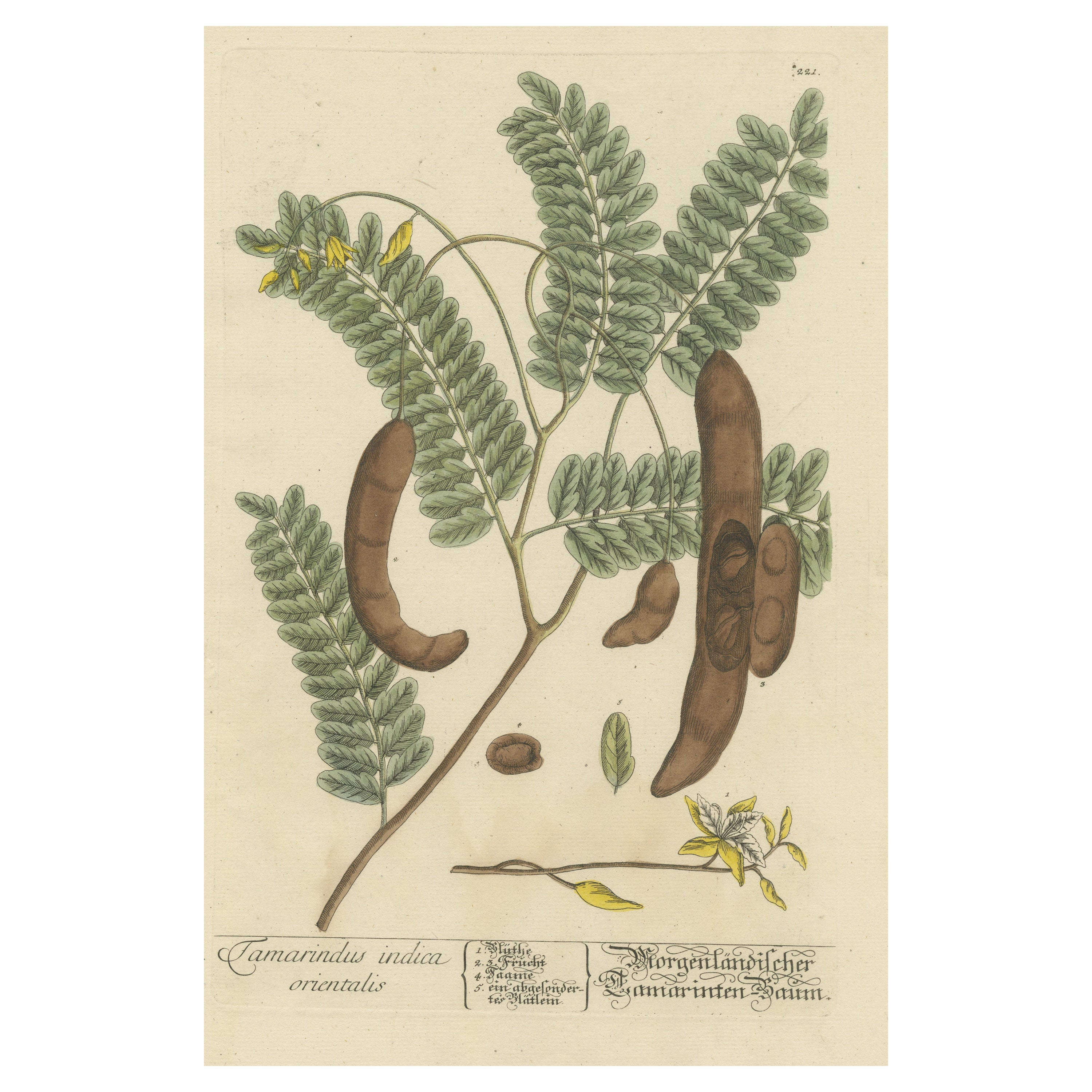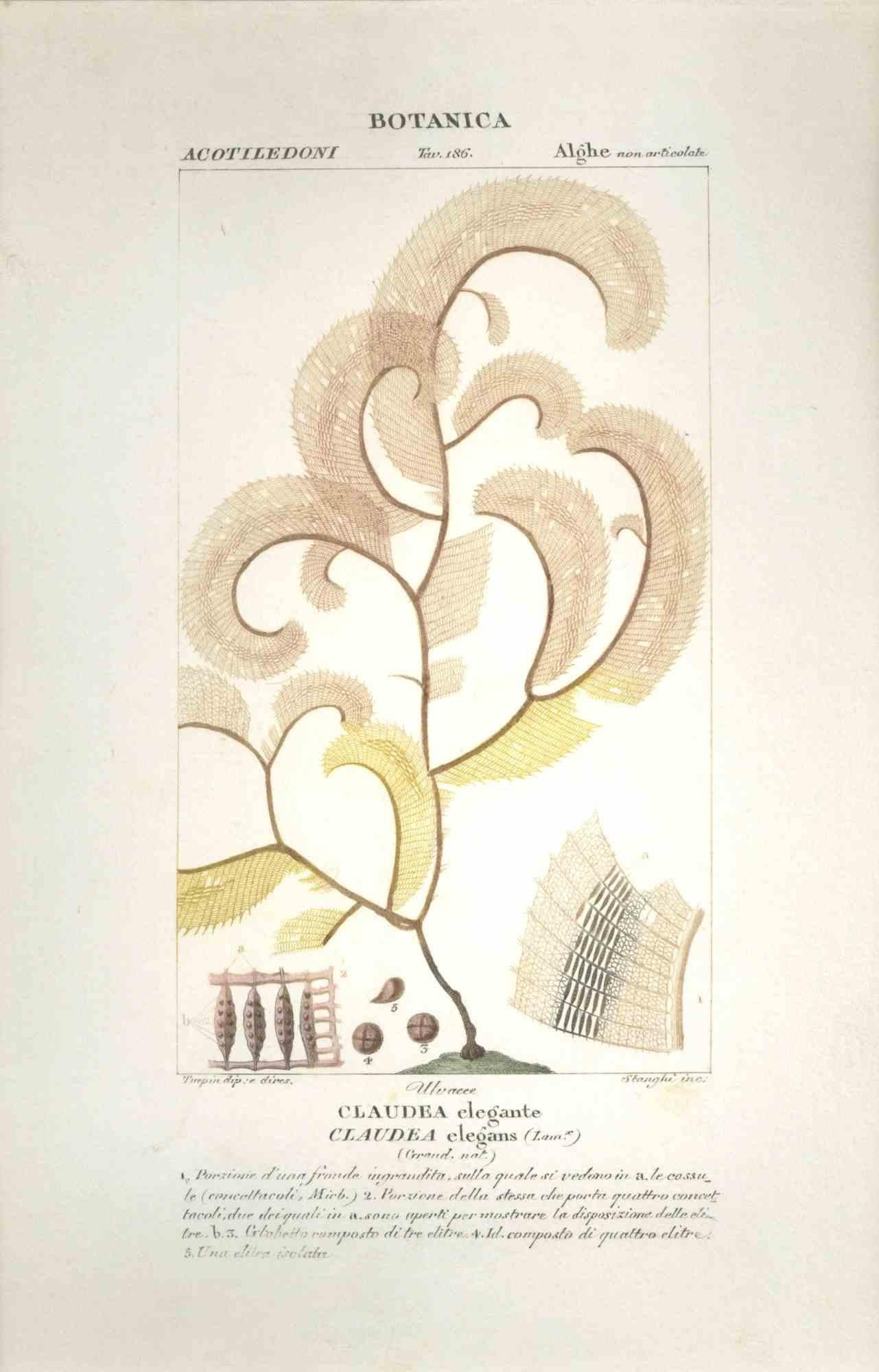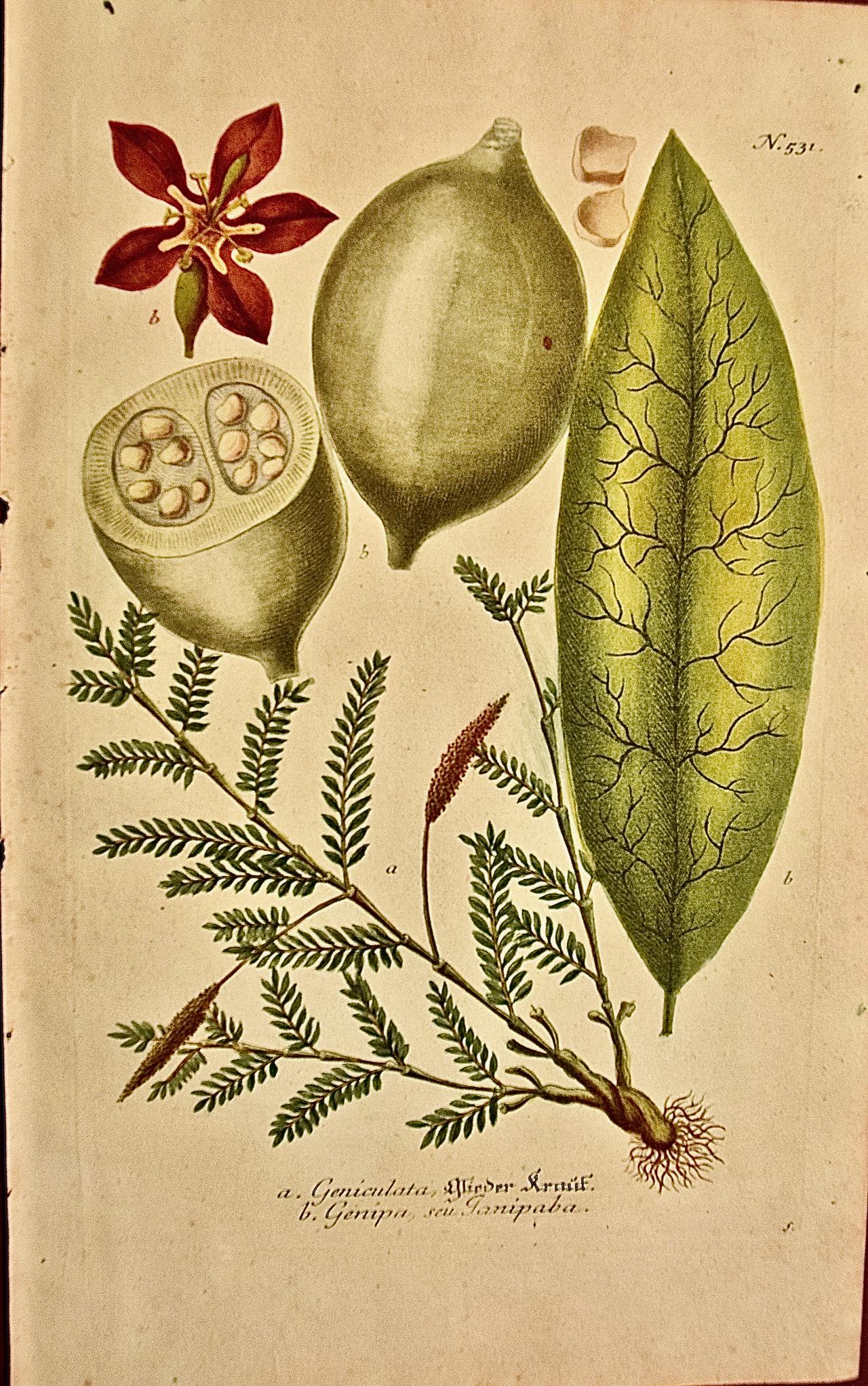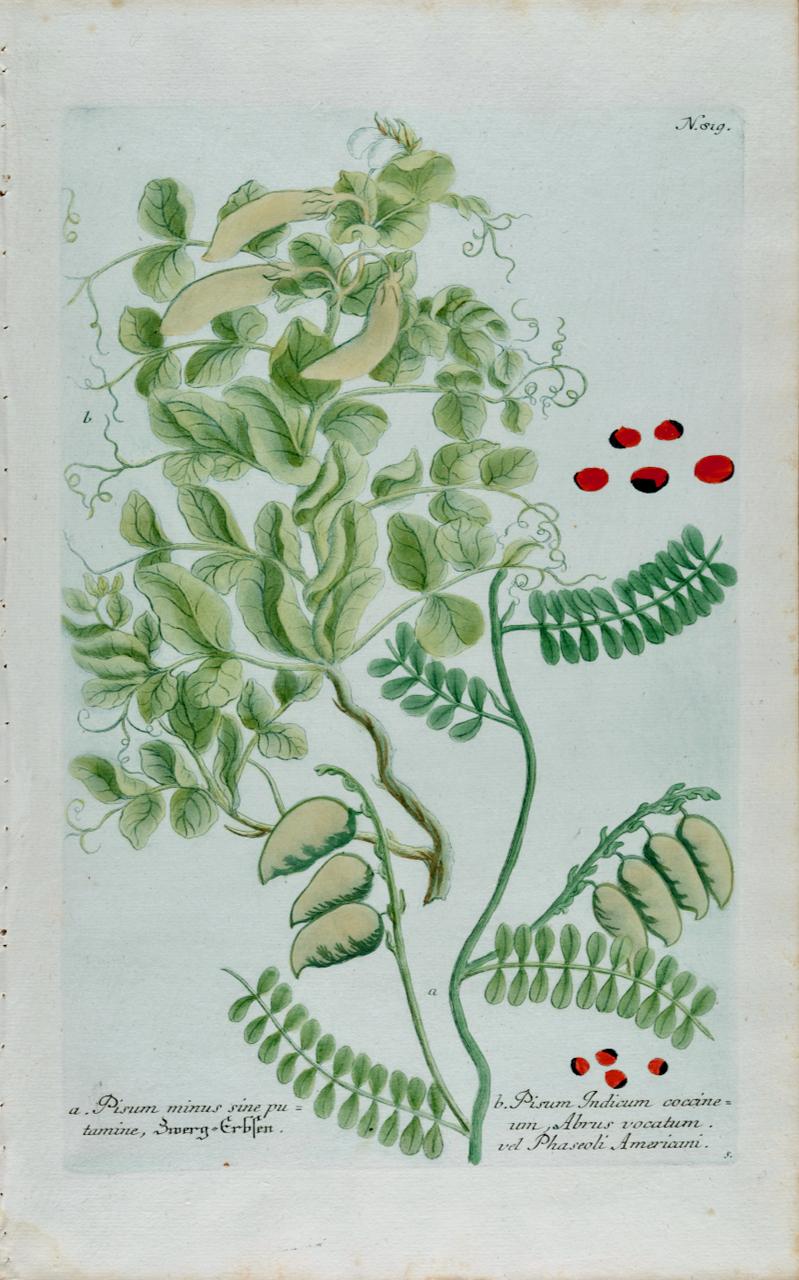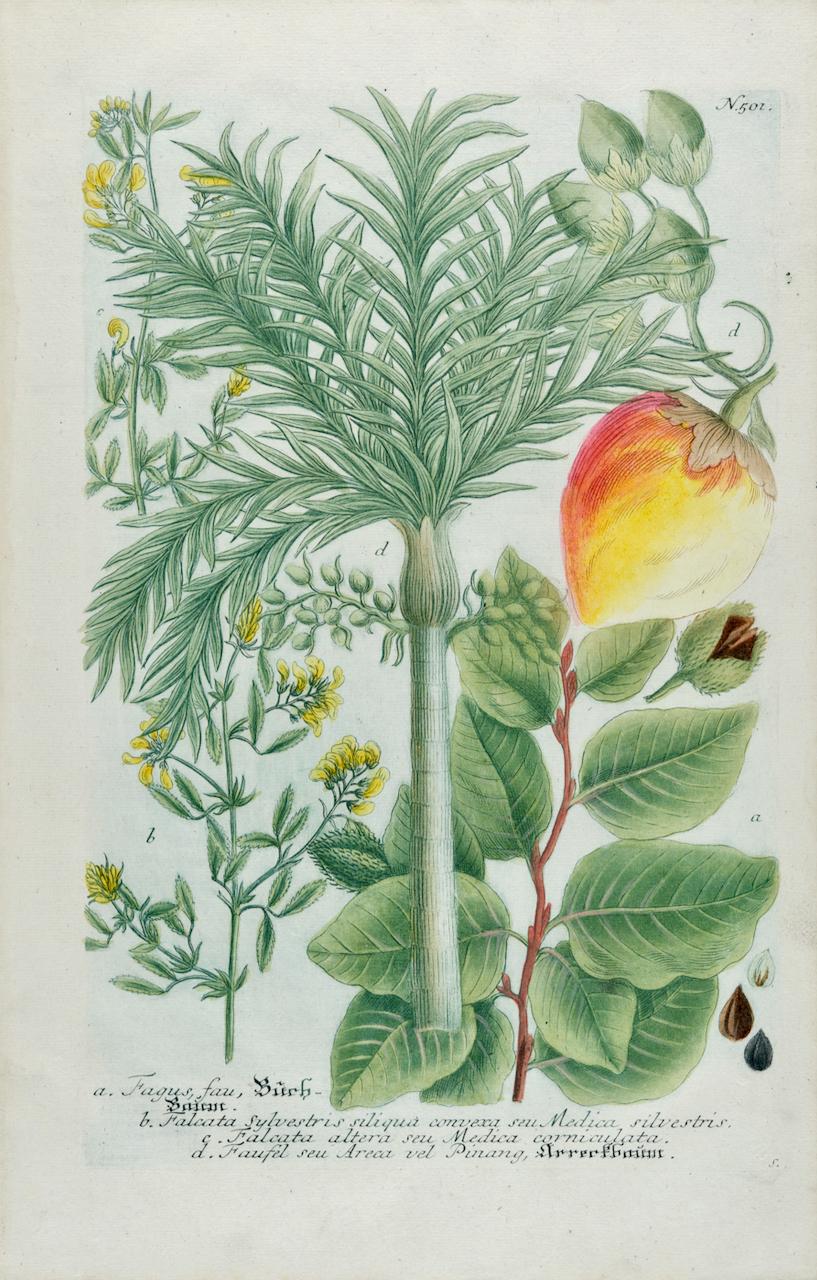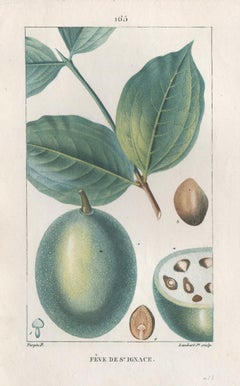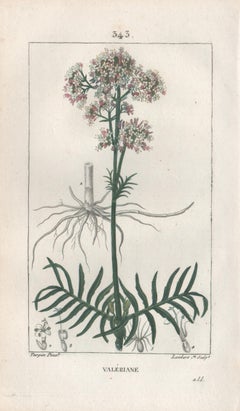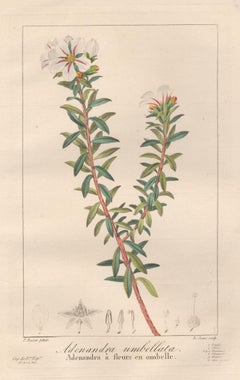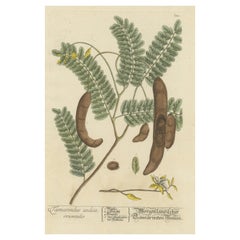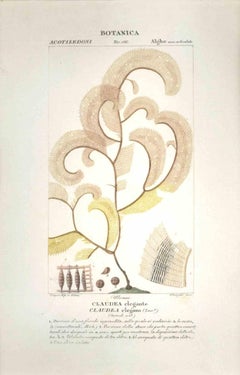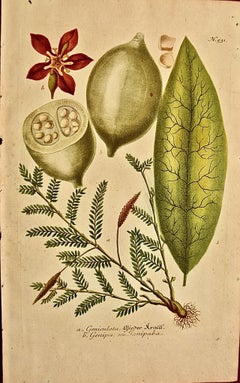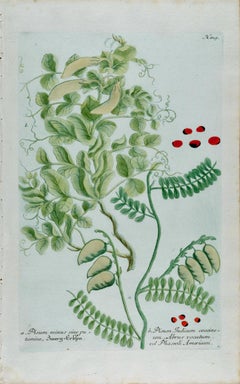Items Similar to Tamarin (Tamarind), French botanical herbal medicinal flower engraving, 1818
Want more images or videos?
Request additional images or videos from the seller
1 of 2
After Pierre TurpinTamarin (Tamarind), French botanical herbal medicinal flower engraving, 18181818
1818
$75
£57.29
€65.83
CA$107.23
A$118.15
CHF 61.16
MX$1,422.52
NOK 774.43
SEK 727.53
DKK 491.50
About the Item
French botanical flower engraving, 1818.
Colour-printed stipple engraving by J Lambert after Pierre Turpin (1775-1840)
From Francois Pierre Chaumeton's 'Flore Medicale' which portrayed a variety of flowers, trees and herbs which could be used for treating illnesses. The engravings were produced during the great period of French colour printing using the stipple-engraving process pioneered by the great botanical artist Pierre-Jospeh Redoute. The artist is the celebrated Pierre Jean Francois Turpin (1775-1840), pupil of Redoute. He is considered one of the greatest floral and botanical illustrators during the Napoleonic Era and afterwards. The engraving is accompanied by the original French descriptive text.
210mm by 130mm (sheet)
PLEASE NOTE : If you are interested in more than one of these, let me know and I can list them together with one shipping cost.
- Creator:After Pierre Turpin (1775 - 1840)
- Creation Year:1818
- Dimensions:Height: 8.27 in (21 cm)Width: 5.12 in (13 cm)
- Medium:
- Movement & Style:
- Period:
- Condition:One tiny spot in the image.
- Gallery Location:Melbourne, AU
- Reference Number:Seller: BT62761stDibs: LU124426336432
About the Seller
5.0
Platinum Seller
Premium sellers with a 4.7+ rating and 24-hour response times
Established in 2005
1stDibs seller since 2019
616 sales on 1stDibs
Typical response time: <1 hour
- ShippingRetrieving quote...Shipping from: Melbourne, Australia
- Return Policy
Authenticity Guarantee
In the unlikely event there’s an issue with an item’s authenticity, contact us within 1 year for a full refund. DetailsMoney-Back Guarantee
If your item is not as described, is damaged in transit, or does not arrive, contact us within 7 days for a full refund. Details24-Hour Cancellation
You have a 24-hour grace period in which to reconsider your purchase, with no questions asked.Vetted Professional Sellers
Our world-class sellers must adhere to strict standards for service and quality, maintaining the integrity of our listings.Price-Match Guarantee
If you find that a seller listed the same item for a lower price elsewhere, we’ll match it.Trusted Global Delivery
Our best-in-class carrier network provides specialized shipping options worldwide, including custom delivery.More From This Seller
View AllFeve de St Ignace (Strychnos ignatii), French botanical flower engraving, 1818
By After Pierre Turpin
Located in Melbourne, Victoria
French botanical flower engraving, 1818.
Colour-printed stipple engraving by J Lambert after Pierre Turpin (1775-1840)
From Francois Pierre Chaumeton's 'Flore Medicale' which portrayed a variety of flowers, trees and herbs which could be used for treating illnesses. The engravings were produced during the great period of French colour printing using the stipple-engraving process pioneered by the great botanical artist Pierre-Jospeh Redoute. The artist is the celebrated Pierre Jean Francois Turpin...
Category
Early 19th Century Victorian More Prints
Materials
Engraving
Valeriane (Valerian), French botanical medicinal herbal flower engraving, 1818
By After Pierre Turpin
Located in Melbourne, Victoria
French botanical flower engraving, 1818.
Colour-printed stipple engraving by J Lambert after Pierre Turpin (1775-1840)
From Francois Pierre Chaumeton's 'Flore Medicale' which portrayed a variety of flowers, trees and herbs which could be used for treating illnesses. The engravings were produced during the great period of French colour printing using the stipple-engraving process pioneered by the great botanical artist Pierre-Jospeh Redoute. The artist is the celebrated Pierre Jean Francois Turpin...
Category
Early 19th Century Victorian More Prints
Materials
Engraving
Apocynum androsamifolium - French botanical flower engraving by Bessa, c1830
By After Pancrace Bessa
Located in Melbourne, Victoria
'Apocynum androsamifolium' (Fly-trap dogbane or spreading dogbane)
Original copper-line engraving with original hand-colouring.
From 'Herbier general de l'amateur' by Jean Louis A...
Category
Early 19th Century Naturalistic Still-life Prints
Materials
Engraving
Adenandra umbellata - French botanical flower engraving by Bessa, c1830
By After Pancrace Bessa
Located in Melbourne, Victoria
'Adenandra umbellata'
Original copper-line engraving with original hand-colouring.
From 'Herbier general de l'amateur' by Jean Louis Auguste Loiseleur-Deslongchamps & Jean Claude M...
Category
Early 19th Century Naturalistic Still-life Prints
Materials
Engraving
African Boxthorn (Lycium horridum, Thurnberg), antique botanical lithograph
Located in Melbourne, Victoria
'African Boxthorn (Lycium horridum, Thurnberg)'
Colour lithograph, 1909. Plate number printed at the top of the image.
Category
Early 20th Century Naturalistic More Prints
Materials
Lithograph
Renoncule des marais (Buttercup), French botanical flower engraving, 1818
By After Pierre Turpin
Located in Melbourne, Victoria
French botanical flower engraving, 1818.
Colour-printed stipple engraving by J Lambert after Pierre Turpin (1775-1840)
From Francois Pierre Chaumeton's 'Flore Medicale' which portrayed a variety of flowers, trees and herbs which could be used for treating illnesses. The engravings were produced during the great period of French colour printing using the stipple-engraving process pioneered by the great botanical artist Pierre-Jospeh Redoute. The artist is the celebrated Pierre Jean Francois Turpin...
Category
Early 19th Century Victorian More Prints
Materials
Engraving
You May Also Like
Antique Botanical Print of a Tamarind Tree
Located in Langweer, NL
Antique print titled 'Tamarindus indica orientalis'. Botanical print of tamarind, a leguminous tree bearing edible fruit that is indigenous to tropical Africa and naturalized in Asia...
Category
Antique Mid-18th Century Prints
Materials
Paper
$464 Sale Price
20% Off
Anagni - Botany, Plate 186 - Etching by Jean Francois Turpin - 1831
By Pierre Jean François Turpin
Located in Roma, IT
This is one of the illustrations of Dizionario di scienze naturali Natural sciences dictionary edited by Battelli nel 1831. The work was made of 29 volumes, containing hundreds of e...
Category
1830s Modern Figurative Prints
Materials
Etching
Genip Tree & Fruit: An 18th C. Hand-colored Botanical Engraving by J. Weinmann
By Johann Wilhelm Weinmann
Located in Alamo, CA
This hand-colored botanical mezzotint and line engraving by Johann Wilhelm Weinmann (1683-1741) is entitled "A. Geniculata Wieder Kraief, B. Genipa seu Ganipaba". It is plate 531 in...
Category
Mid-18th Century Naturalistic Still-life Prints
Materials
Engraving, Mezzotint
Cultivated Pea Plants: An 18th C. Hand-colored Botanical Engraving by Weinmann
By Johann Wilhelm Weinmann
Located in Alamo, CA
This hand-colored botanical mezzotint and line engraving by Johann Wilhelm Weinmann (1683-1741) is entitled "a. Pisum Minus sine Putamine, b. Pisa Indicum". It is plate 819 in Weinma...
Category
Mid-18th Century Naturalistic Still-life Prints
Materials
Engraving, Mezzotint
Betel Nut Palm: An 18th Century Hand-colored Botanical Engraving by J. Weinmann
By Johann Wilhelm Weinmann
Located in Alamo, CA
This is an original antique colored botanical mezzotint and line engraving of a flowering Betel Nut Palm plants, which is finished with hand-coloring. It is entitled "Fagus Fau Buch,...
Category
Mid-18th Century Naturalistic Still-life Prints
Materials
Engraving, Mezzotint
Flowering Chestnut Plant: 18th C. Hand-colored Botanical Engraving by Weinmann
By Johann Wilhelm Weinmann
Located in Alamo, CA
This hand-colored botanical mezzotint and line engraving by Johann Wilhelm Weinmann (1683-1741) is entitled "Castanea Equina, Chateignier amaire (Horse Chestnut)". It is plate 342 in...
Category
Mid-18th Century Naturalistic Still-life Prints
Materials
Engraving, Mezzotint
More Ways To Browse
Antique French Engravings
Engravings 19th Century French
Victorian Botanical Prints
French Botanical Prints
Iran Poster
Italian Food Posters
Jaguar Car Poster
Jean Bradbury
Jean Choiselat
Jenny Holzer Postcard
Jose Morell
Joy Lane
Karl Klein
Kenneth Steel Art
Lake Garda Vintage Poster
Lela Bliss
Lennon Woman
Levi Andy Warhol
